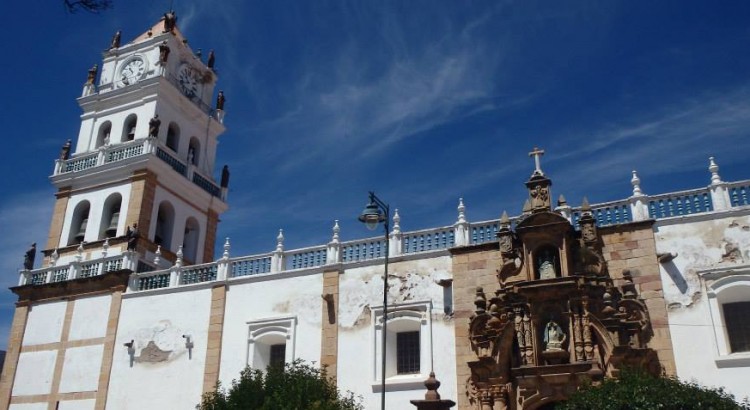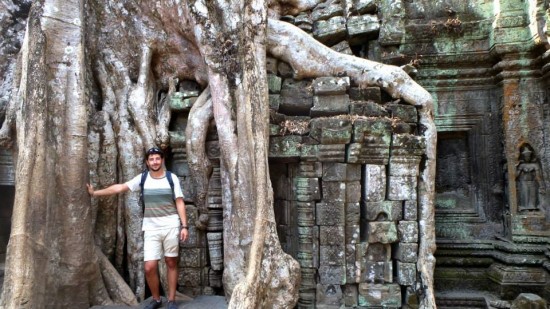Sucre is the capital of Bolivia and was declared a Unesco world heritage site declared in 1991. Arriving in Sucre was a breath of fresh air. It is so different to Potosi and we weren’t expecting it to be so clean, corporate and switched on.
We arrived in the pouring rain in the middle of nowhere so jumped in a cab and headed for a hostel. I asked the taxi driver if it rains a lot and he assured me this was normal. We came to understand this ourselves with frequent thunderstorms all throughout Bolivia.
Plaza 25 de Mayo:
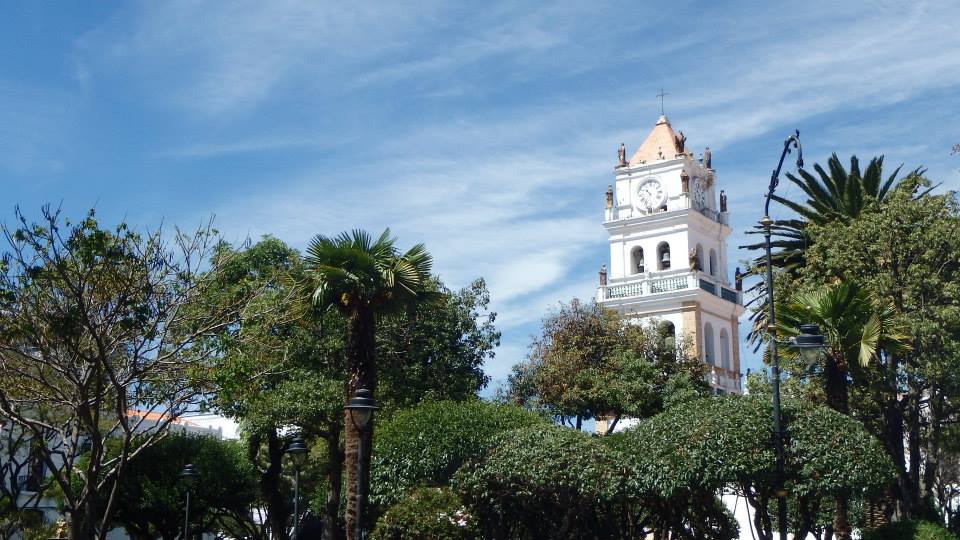
Even on a Monday evening the city was bustling with people. So different from Potosi. The square was a delight with perfectly pruned gardens, fountains and even a tree lion. Surrounding the plaza were beautiful colonial buildings, a cathedral and many cafés. We hadn’t come across a city/town in Bolivia with a cafe culture so this really gave the impression of a modern city with greater affluence than the rest of the country.
The view from the top:
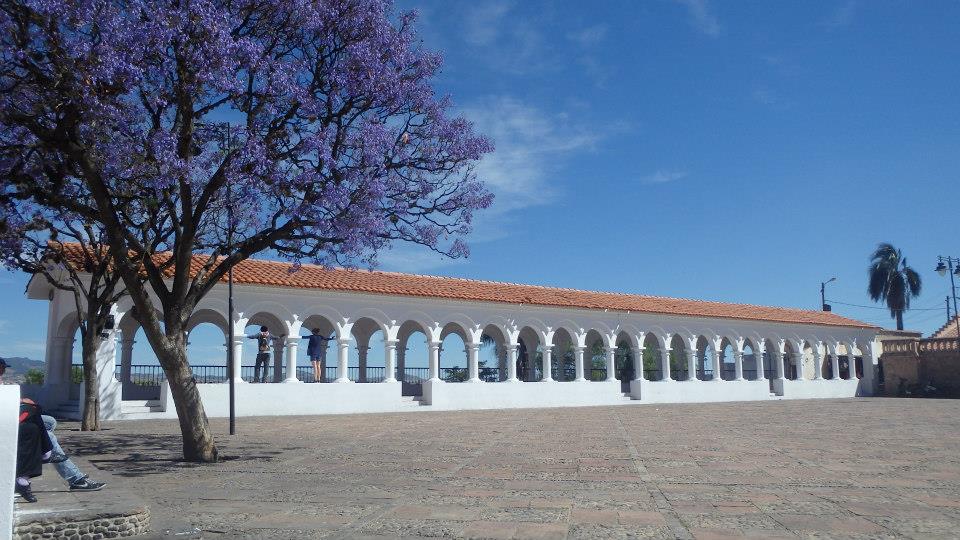
Mirador Recoleta is located at the top of a pretty steep hill. It’s definitely worth the hike, as when you get to the top you reach Plaza Pedro de Anzurez. Here you will find a church and a beautiful long corridor of white arches. Heading inside the arches you are faced with a breathtaking view of the city below in all it’s white and terracotta glory. Wow.
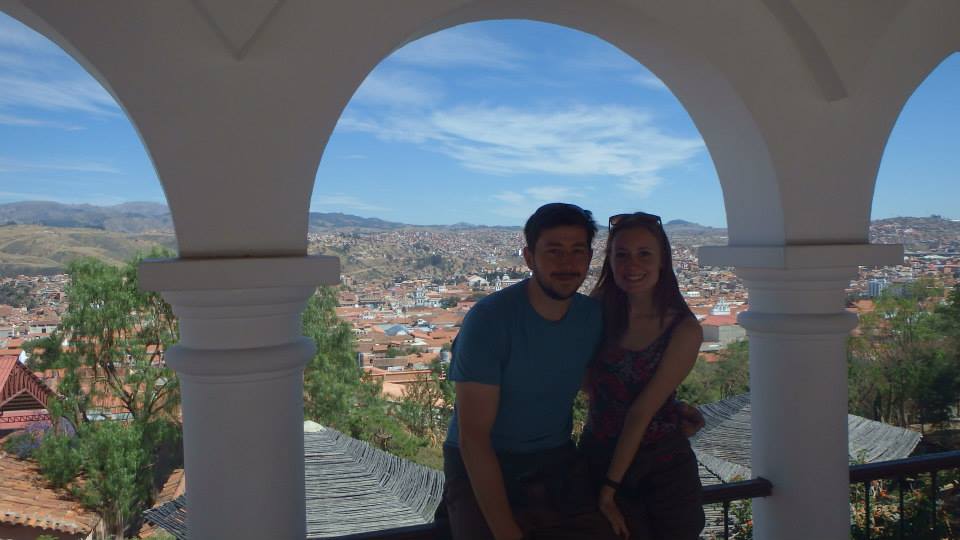
Mercado Central:
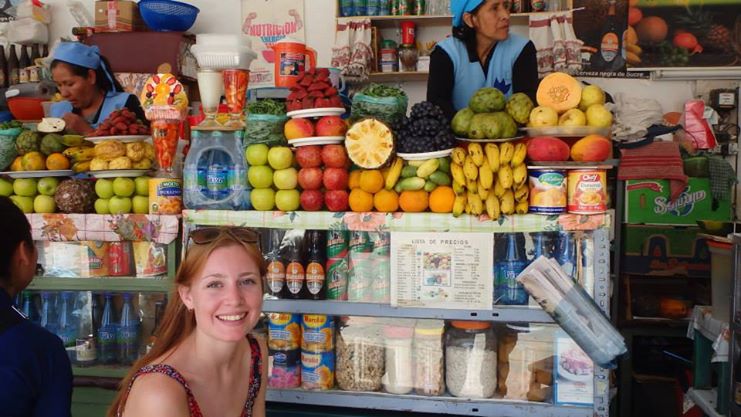
The central market is vast; I have never seen so many sacks of potatoes and piles of meat and cheese. It was slightly off-putting with the dogs drooling everywhere though and our friends told us as they walked through that they got sprayed in the faces with chicken juice! Minus the (compulsory Bolivian) bad sanitation the market was great to walk around. We decided to risk the fruit bar and join the locals for a fruit salad with yoghurt and cream. It was delicious.
Parque Boliviar:
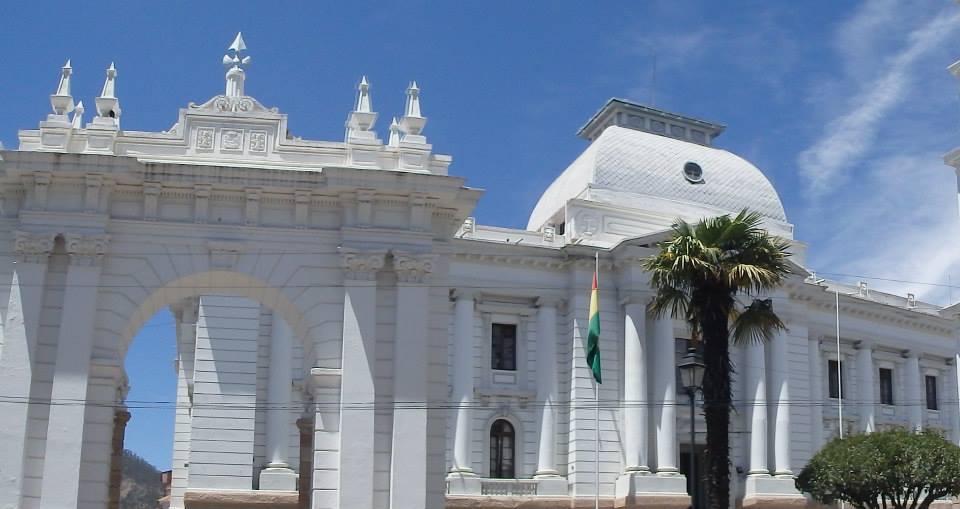
After, we headed to the main park, Parque Boliviar, which – to be honest – we found quite disappointing. It was pleasant to walk around though and here you can also find all the governmental buildings which were very grand and affirmed our initial impressions of the city.
Cemetario General:
From the park we headed to the cemetery. This isn’t something we would normally do as I don’t like the fact that places which are very personal are tourist attractions. But I can see why this one is so popular. For a start it is absolutely huge and it is perfectly maintained. As you walk around you are faced with endless rows of stacked graves and ornate mausoleums. It is almost a city within a city. The cemetery is full of glass-plated shrines which are filled with photos, flowers and objects dear to the deceased. It offers a place a piece within the city but I still didn’t feel welcome there or that it was appropriate, so we didn’t stay long and left to eat some chocolate m&m’s and headed for the next market.
Market in Barrio Obrero:
We had heard this market was a bigger and better version of the central market. This really isn’t the case and shouldn’t be compared as Barrio Obrero is really more of a street market than a permanent fixture. It takes a while to get there by taxi and our taxi driver wasn’t even sure where it was! Once arriving you realise how vast the place is. You can pretty much get anything here and if you need cheap clothes or toiletries it is the place to go. However, it isn’t the most exciting place for a browse. We didn’t stay very long.
We slowly headed back to town doing a bit of shopping on the way. We got in and were exhausted so decided to go for a nap. That’s when it all started going wrong…
Getting ill:
We wouldn’t be true travellers in Bolivia without getting food poisoning. Not very nice when you have to keep running outside in the dark to the bathroom with a head torch and toilet roll in hand.

Indigenous Art Museum
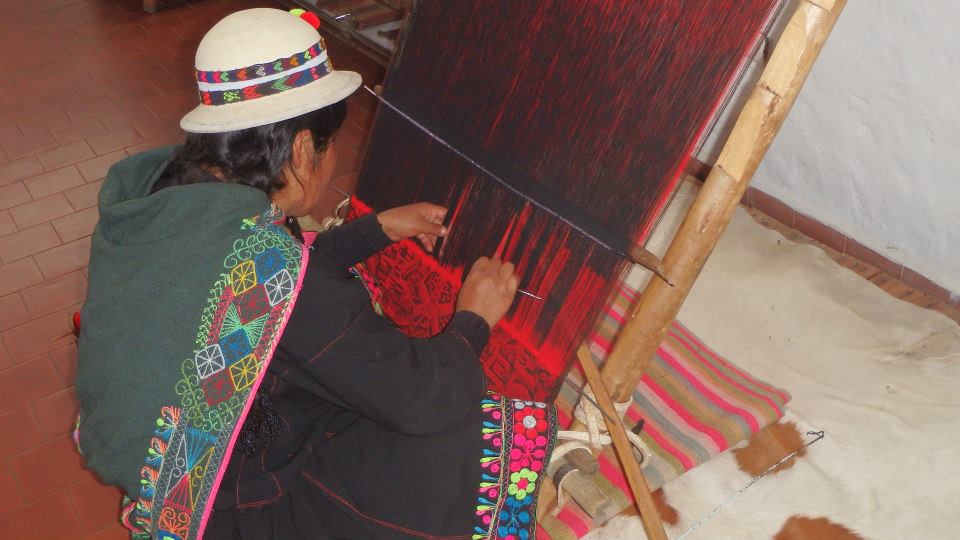
We were really impressed with how posh, thorough and modern this museum is. We found out about all the different types of art, music and dance throughout the different regions of Bolivia. The tapestry work was the most incredible. It takes 5 months to complete a tapestry and each day, working 8 hours, they only complete two fingers height across the width of tapestry. Each one is unique as they are created from memory. They don’t follow patterns, they just calculate them perfectly! Fantastic.
Things we didn’t do but you can do in Sucre
- Castillo de la glorieta. 7km from downtown. Read a good post about it here.
- Tarabuco market. On Sundays. 65km from the city. Regular buses.
- Parque Cretacico. Transport daily from the Cathedral.
- The Cathedral. Only open for mass on Sundays or Thursdays 9-10 am.
